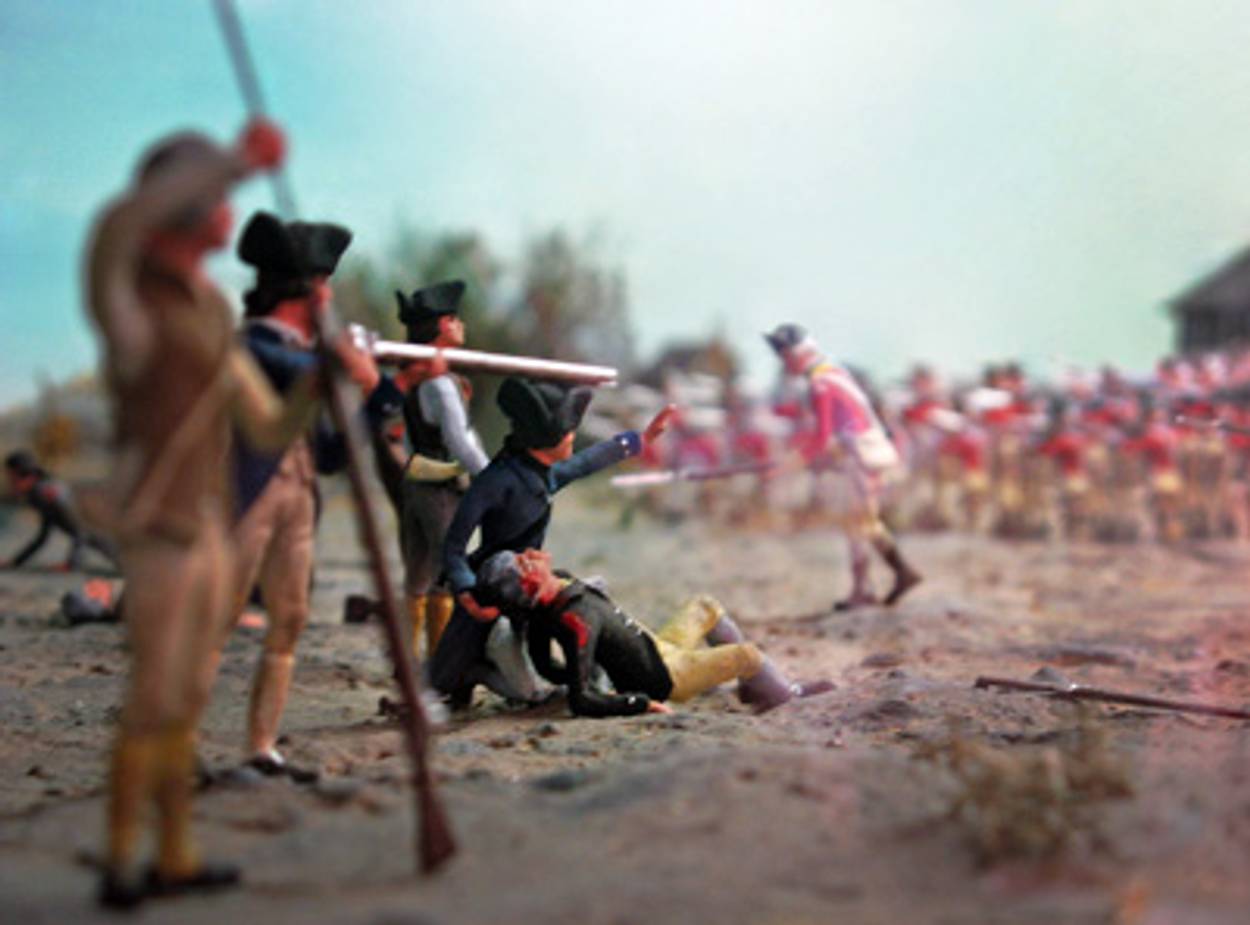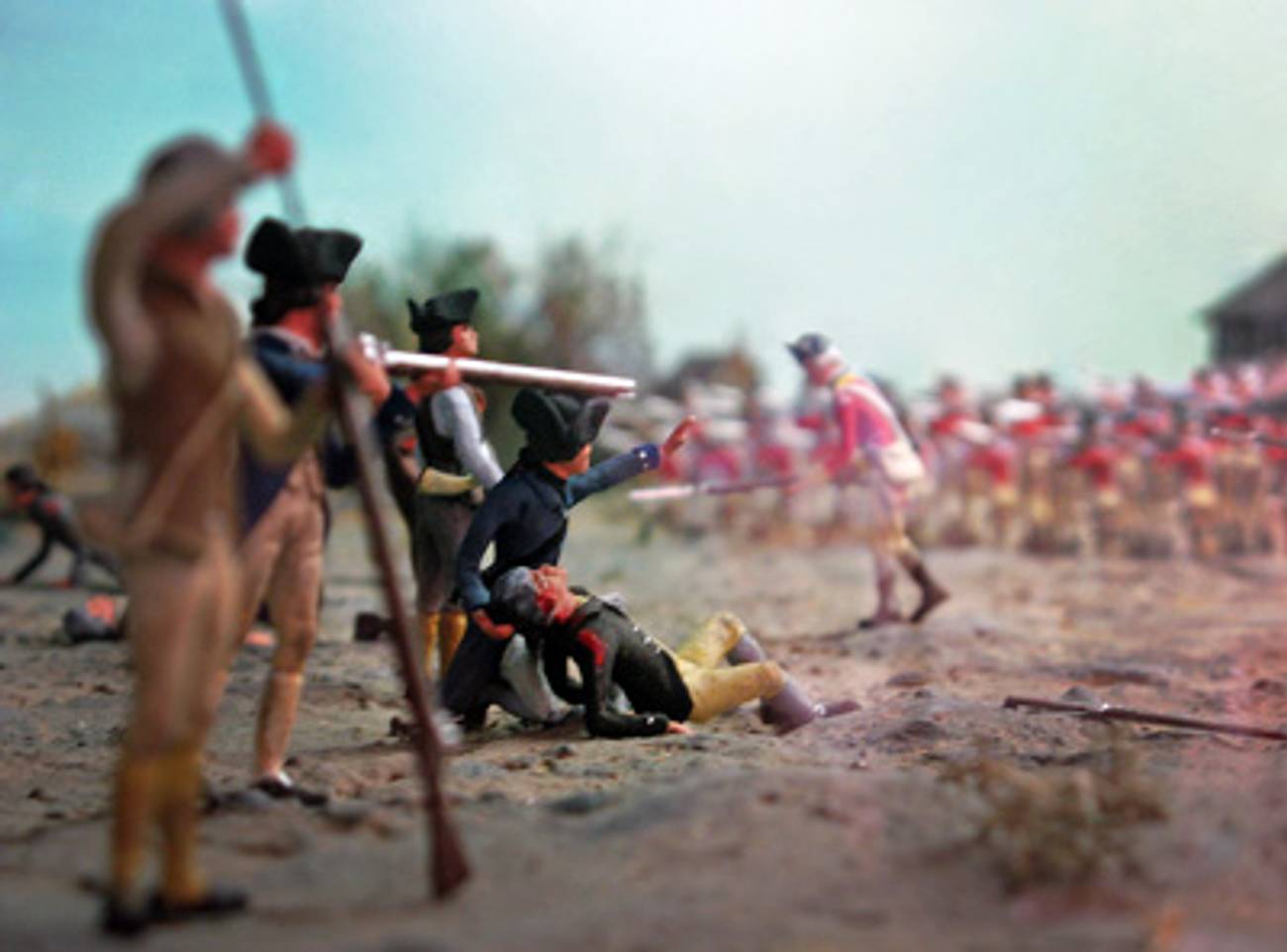Sons of Liberty
A historical children’s book with conflicting ideas on Jewishness




Haym Salomon: American Patriot, a new children’s book by Susan Goldman Rubin, tells the story of a Revolutionary War-era immigrant who helped George Washington’s army survive by providing money and supplies. Haym joins the Sons of Liberty and shows up at Fort Ticonderoga, returns to New York and gets arrested by the Redcoats, escapes from jail the night before his hanging, and eventually helps found the Bank of America. In Rubin’s version, he does it all with a puppy by his side, drawn with cute appeal by David Slonim. It’s one of two recently-published children’s books that exemplify a view of American Jewishness that is not only anachronistic but ineffective, based on assumptions about what Jewish children need that are more suited to the 1930s than the 21st century.
I remember Howard Fast’s 1941 version, Haym Salomon: Son of Liberty, from the Jewish section of my childhood bookshelf. I don’t recall actually reading it, though: I was too busy with tales set in Chelm, or starring Zlateh the Goat; later, I became entranced with Chaim Potok’s tortured adolescents and Anzia Yezierska’s rebels. When I wanted Jewish warriors, I had Bar Kochba and the Warsaw Ghetto uprising. Next to them, Haym Salomon couldn’t hold a candle—or, a gun.
Since as far back as 1911, Salomon biographies have been a fixture of American Jewish publishing: a new one appears every decade or so, including several versions for young adults, starting with Fast’s. Teenagers are, perhaps, old enough to recognize heroism even when it comes in the form of a no-interest loan. The author of many nonfiction books for children, Susan Goldman Rubin aims for the younger set, but Salomon’s story suffers from the need for simplicity. He was, let’s face it, a moneylender—not the profession most likely to excite a boy about his Jewish heritage.
At least the Jewish Revolutionary War hero of Hanukkah at Valley Forge, by Stephen Krensky, is a soldier, though we never actually see him fight. Instead, he explains the story of the Maccabees to General Washington, who comes across the light of the soldier’s menorah while wandering through the snowy camp. With gorgeous paintings by Greg Harlin, the book alternates between scenes of the two revolutions: by the end, Washington has walked off into the night, a war still left to win. He’s inspired, though: “The fight for liberty is an ancient one. And no one likes squirming under the thumb of a distant king.”
Krensky knows what children like: He’s the author of books on subjects like dragons and dinosaurs, along with dozens of adaptations of the TV show Arthur. But the stilted language shows how this book too often privileges history over youthful interest, while never providing quite enough facts to feel real. The author’s note explains that “some of Washington’s dialogue here has been borrowed from his own writings in the hope of echoing his real voice”; Krensky bases the tale on a memory supposedly shared by Washington years later at a lunch with a Pennsylvania Jewish family, and passed down in the family’s lore. This family doesn’t appear in the story itself, and we don’t get much detail about the generic soldier, with one caveat: While some soldiers “were without coats or shoes,” the Jewish hero soldier looks about as warmly dressed as Washington himself. We also don’t learn where he found himself a menorah: perhaps on Valley Forge’s Upper West Side?
Haym Salomon: American Patriot can’t decide whether it aims to entice children or make them eat their kosher greens. We get that cute dog (not, apparently, based on fact), along with a pirate and his parrot, but young readers must also wade through too many pages filled with encyclopedic explanation. (“The Hessians did not care about the American Revolution. They were career soldiers who fought other people’s wars to earn money. The British had hired them to fight on their side and had brought them over to America.”) Rubin describes Salomon as a religious man, and includes a famous scene in which Salomon raises $20,000 for the Revolution at a Yom Kippur service. But she leaves out the anti-Semitism highlighted in Fast’s version (the villainous British who capture Salomon mutter “cursed Jew” at every opportunity). Being Jewish in Revolutionary America, according to Rubin, was no big deal: Haym Salomon, proto-Joe Lieberman.
There is a kind of Shylock anxiety to both books, a “does not a Jew bleed (for his country)” tone. They may be displayed by multi-culti teachers during units on the American Revolution, but it’s hard to imagine children reading them other than dutifully, which begs the question: why do they exist?
The answer is simple. To declare, “us, too.” We can be both Jewish and American, even patriotic: celebrate Hanukah and camp with fellow soldiers, observe Yom Kippur and finance freedom. As far back as the Revolution, we served our country. These books reflect an approach to educating American Jewish children that is exactly opposite to the actual needs. My parents or grandparents—and their Christian classmates—might have needed to be told that there was no conflict between being Jewish and being American. The issue for them was acceptance. Today the concern facing Jews is assimilation.
More than anything else, reading is what made me, as a child, feel Jewish—what made me want to be different, and to celebrate that difference. There were books about Chelm—being Jewish was funny. And Bonchte the Silent—being Jewish was steadfast. And Anzia Yezierska—being Jewish was scrappy. And the Rabbi of Nemirov—being Jewish was compassionate. And Tevye—being Jewish was, sometimes, a pain in the neck.
I have four nephews under the age of ten, and I wish a similarly sundry connection for them. Most of the time, they’re more interested in wrestling with each other than in any form of Jewish heritage. That’s age-appropriate, I guess; I only want their noses stuck in a book some of the time! And when they do settle down to read something Jewish, it can’t be too mainstream American. They’re more likely to stay interested if they have to do some wrestling with their heritage, too.